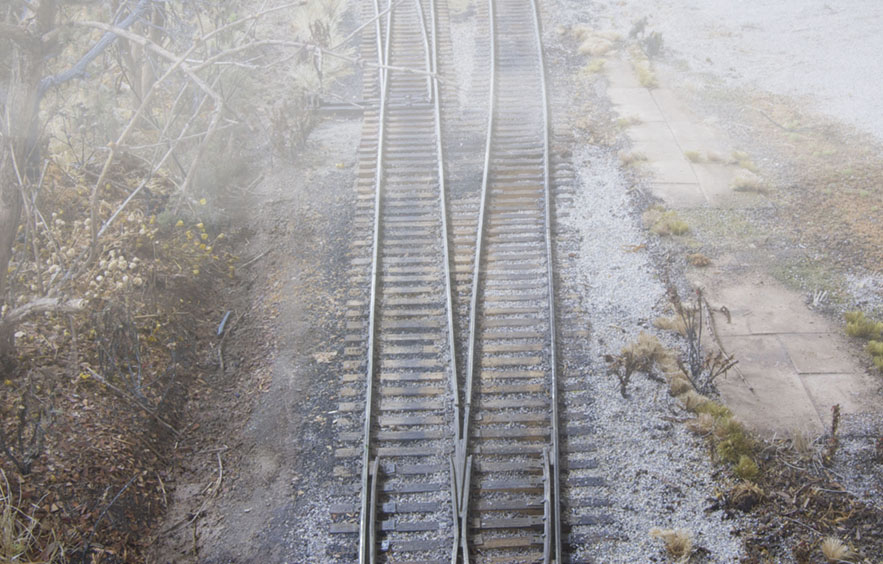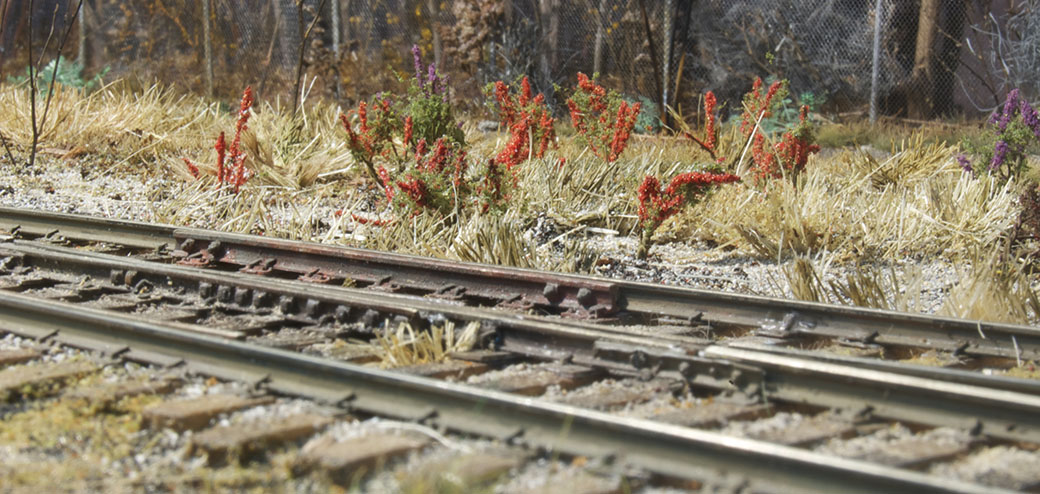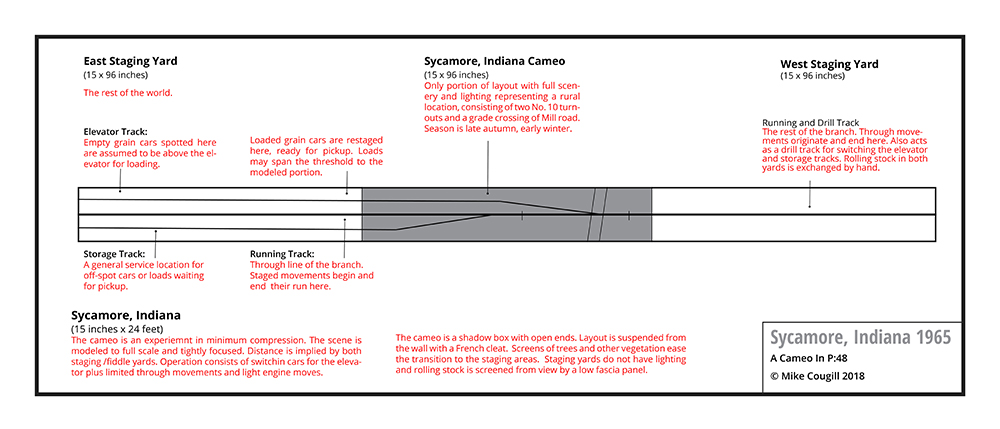
Cameo Planning: It’s A Journey Instead Of A Blueprint
“I really like your idea here, but would have to worry about the time element going in the other direction, too short. You have already completed most of the work by salvaging the track work from an earlier layout. I would want to work on a layout for at least two years.”
John Moenius
There’s no denying that a cameo layout has limited scope with the construction. They can be completed quickly, operated for a time and then, the urge to move on is felt by the builder. From what I’ve read in other blogs and magazine articles, it’s typical to explore different themes, prototypes, eras or modeling scales. The rationale is that doing so satisfies multiple interests and keeps the work fresh. However, there’s always more than one way to look at things. In the same comment thread, Dave Eggleston offered the following:
“The core of Mike’s layout may be complete quickly but by having an operational cameo you both model and operate on this layout while having the opportunity, as this project matures, to work on and plan the next project in an overlapping fashion. It allows interest in both and a chance to develop a rational flow from layout to layout, experience to experience.”
I admit I hadn’t thought of it in those terms but I like where it goes. My former Indiana and Whitewater layout was based on a real branchline. It represented the start of the branch at Valley Junction, Ohio but was in fact, a mash-up of signature elements, like the Cedar Grove feed mill, composed into a single scene. My thinking back then was that VJ offered the most operating potential for the limited space I had. My version of the branch was only a short section of track leading to a staging cassette. Over time, I came to regret this decision.
I still like the Indiana and Whitewater concept and after reading Dave’s comment, it occurred to me that I could explore that theme to my heart’s content via cameo design.

The Valley Junction scene may be gone but I’m not done with the Indiana and Whitewater theme.
It’s A Journey, Instead Of A Blueprint.
As before, I prefer simple operations of a single train working the line as needed. It might start with a light engine movement coming from the terminal at the end of the branch (the drill track staging area) slowly making his way across the layout. It’s an establishing shot that introduces the character of the line (see the video below) and a reminder of when I happened to catch a train at unexpected times and places. Upon entering the three-track staging area, he will pick up any cars positioned on the running track, and he waits to simulate the time and distance involved in going to the interchange and back.
Every Detail Doesn’t Have To Be Told.
For my purposes, I don’t need to locate the cameo on the nationwide rail network to enjoy the potential it offers. The names east and west staging merely reflect the orientation of the layout in my basement. I could have called them left and right, up and down or here and there. The point being, I don‘t need to know where the incoming cars originated or how they arrived at this location. I’m only interested in what happens to them now that they are here.
In a similar vein, the choice of 1965 was quite arbitrary. I have pleasant memories of the decade and that year seemed as good as any other. However, thanks to the absence of time sensitive features in the scene, I’m not limited to just one era as Matt Lachance observed:
“Another point to add to Dave’s excellent observation is that this kind of cameo design is time less and unspecific. That may sound underwhelming, but in fact gives a lot of flexibility to a design that is basically universal in railroading whatever the era and prototype. Any modelling project fitting within the basic theme of this cameo layout will find a deserving platform to be displayed and put in action. An old 40ft boxcar or a modern grain hopper will be both at home, and the craftsmanship put in them will show off quite well.”
I had been thinking along those lines when I planned the scene. In observation tests, forty–foot boxcars fit the size of the layout well, so the 1960s came into play. I also like modern equipment but it could easily overwhelm everything if handled carelessly. Finding the balance is a good experiment to play with.

The Show Continues.
Back with his train, it’s time to work the elevator. There may be loads to pick up and inbound empties to position. The crew will use all of the track available to them, meaning the train will traverse the entire length of the scene multiple times, ducking in and out of both staging areas in the process. I won’t see the entire train unless I move with it. With both ground throws located a short distance from each other, I can simply assume the role of conductor or brakeman and stay put. However, a two-man crew adds another layer of interest.
In such a case I will likely ask the engineer to stay with the locomotive, as if he were in the cab. In this situation he will sometimes have something to look at and at other times not as he waits for my next instructions. As brakeman, I may be lining a switch on stage or uncoupling cars in staging. I anticipate more exercise for the imagination than being able to see everything at once. Will this work is a question to play with and definitely a work in progress.
Once the work is complete, the train may continue on to the end of the branch, as represented by the drill track staging, or take the loaded grain cars to the interchange, then return light the way he came. It depends on the work to be done and on the railroad; no two days are alike.
The Real Limitations Of A Simple Design.
I appreciate where John’s concern comes from in the opening quote but I encourage John and others to take the ideas presented here and truly make them your own.
The pursuit of simplicity strips away the clutter of our thinking so we can get to the core of a thing. We tend to focus on the surface instead of looking further. If there’s too much to take in we can pass on doing the work to look deeper. I believe much of our dislike of simple designs is a reaction to losing that complexity or excuse. We each create a story about trains and the craft. The hobby is all about this; my layout has to have that and so on. We’re comfortable with our own narrative and wonder what’s left if it’s taken away? I suggest there is more to your story than you think and that with a simple design, the real limitations are the ones we bring to it.
Regards,
Mike
Resources
Chris Mears has a knack for designing innovative small layout forms and this blog post of his shares a similar theme.
A light engine move is interesting in its own right, as this video of the East Penn Bristol Industrial track shows.
Thank you for the thought provoking article and the wonderful video. They were both thoroughly enjoyed.
“The hobby is all about this; my layout has to have that and so on. We’re comfortable with our own narrative and wonder what’s left if it’s taken away? I suggest there is more to your story than you think and that with a simple design, the real limitations are the ones we bring to it.”
Too often we have heard people having a somewhat clear picture about what they wanted to do, but still asked for advices and got that “you need that and that” reply. Not only the original creator didn’t have confidence in himself, but the others seems to have very little interest in understanding the other’s vision, instead projecting their own biased and perpetuating strange “rules”. I can’t help but be sad to see how people are ready to sacrifice their creative independence when they feel insecure. It doesn’t take a lot to make a good story. Just like a good movie, it’s not about having a zillions ideas, but rather making a few in an extraordinary way. Hollywood is full of these “basement empire” layout type movies… and we know how boring and meaningless they are regardless the resources and talents poured in them.
Mike,
I hope you understand none of my comments were meant as criticism, far from it. Your website is one of my favorites because of your thoughtful commentary. It gets one thinking about what is really important to them in their modeling efforts. My interests are close to yours, the mass and the noise of cars getting moved at slow speed and the work needed just to drop a car is compelling. Much more so than a 60 car stack train.
John Moenius
Hi John,
I didn’t take your comment as a criticism at all. I used it to illustrate how hard it is to look beyond the obvious solutions. Everyone has a favored point of view and reasons for the choices we make about the hobby. I’m not here to dictate how anyone should enjoy their hobby. I do however believe it’s good to look more closely at the choices we always default to. Please keep commenting with your usual thoughtful insights.
Regards,
Mike
Hi Matt,
I feel the same way. I’ve read accounts on someone’s blog about how they were happy their plan until someone “educated” them on what they should have done. It’s sad to watch them scrap their ideas, and follow another’s, only to discover it isn’t a good fit for their real interests. This is why I spend so much time encouraging folks to understand what motivates them the most. However, most people just want quick answers.
Mike
I like the way Dave Eggleston’s comment invites a sense of evolution in our work. Where traditional layout design always seems to be stuck trying to figure out how to “fit it all in” this cameo is a different conversation: how to extract the exact story I wish to tell? It’s editing the design of the layout in the way we edit the text of a story to remove distractions and amplify the voice of a story being told.
I am fascinated with this design for the way it deals with location in a way so literal that it becomes a paradox of something equally specific and almost generic. It’s a layout to reward the dedicated Indiana and Whitewater student with details like “Hey, that sure looks like an I&W Racor switchstand!” or “Gosh, I forgot how they were using that stone to ballast the line way back then.” and then also generic enough that most of us can relate a place that you’ve never been.
This approach to design, I feel, is exemplary of how the hobby has evolved. The models work better than they ever have and, as such, are so much more a joy to “operate” and watch in motion. With such advancements in sound and control to add to the scene we are invited to consider layout design as a place to focus on motion as an aural attribute and a visual one. It’s an evolution not of layout design but of our relationship with our work inviting our focus to get up much closer to the trains instead of only the railroad as a composition.
Chris
p.s. thanks for the shout out
Mike,
Having chosen a path to create a freestanding island-type layout in my garage, I am left with available shelf space in the living room where I had been planning to build originally…about 15″ by 96″…or approximately one third of your space. While I fully expect to be blissfully occupied building rolling stock and scenery for the 4’x6′ for the next two years or so, I hope to have that railroad completed to a high degree in that time. Your recent posts have me thinking about the shelf space and what I might do there. In each of the plans I had drawn for the shelf I was trying to fit in enough track to allow for interesting operations and a variety of equipment without having to constantly re-stage. A cameo design is an intriguing approach to consider as an alternative to variety. It seems as if it lends itself well to really fine tuning each element of the design so that a commonplace switching task such as pulling or delivering a similar cut of cars each day at the same time takes on a beautiful familiarity. When a new element is introduced, such as a foreign road hopper, etc. it becomes an occasion to take note of.
Hi Galen,
It’s funny but I’m not certain I could design this layout in HO using the same dimensions. The space would feel bigger because of the smaller scale and I’d be sorely tempted to stuff in more features. I’d certainly include the grain elevator and probably another track or two. The problem in my view, would be loosing the focus of the scene, which speaks more about my thinking process than the modeling scale.
Mike
“This approach to design, I feel, is exemplary of how the hobby has evolved. The models work better than they ever have and, as such, are so much more a joy to “operate” and watch in motion. With such advancements in sound and control to add to the scene we are invited to consider layout design as a place to focus on motion as an aural attribute and a visual one. It’s an evolution not of layout design but of our relationship with our work inviting our focus to get up much closer to the trains instead of only the railroad as a composition.”
That’s an astute observation as always Chris.
Where do we go when the mechanical hurdles are no longer an issue? What do we do as modelers then? What are we trying to communicate -to ourselves and others- with this work? I think you’re correct, we may be fully entering a phase where the craft becomes a means of expression about railroading. As someone deeply involved in the creative process, this is second nature to you but for many, it’s a frightening prospect. It’s a frontier to explore and share our understanding of for those who can do so.
Thanks for sharing.
Mike